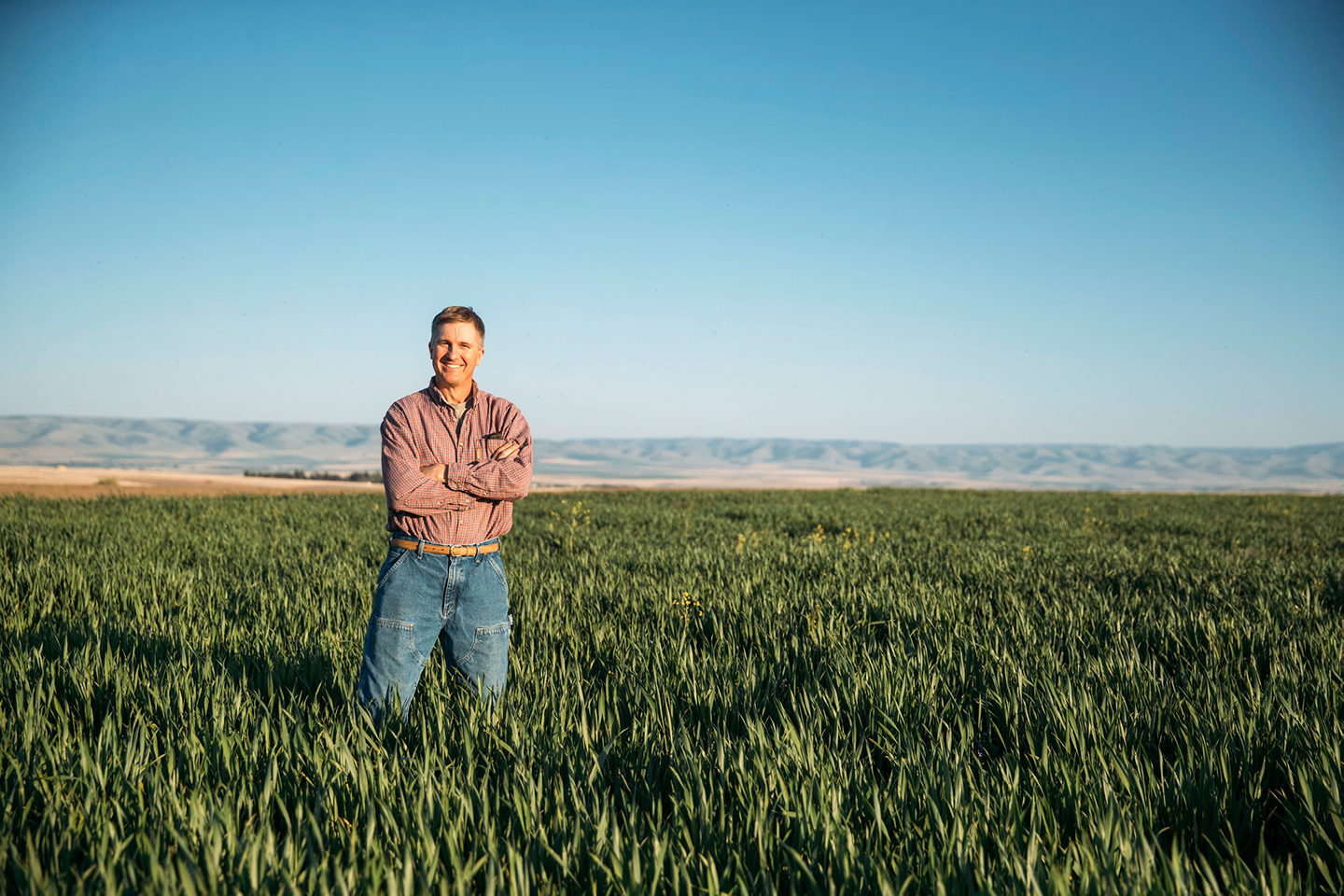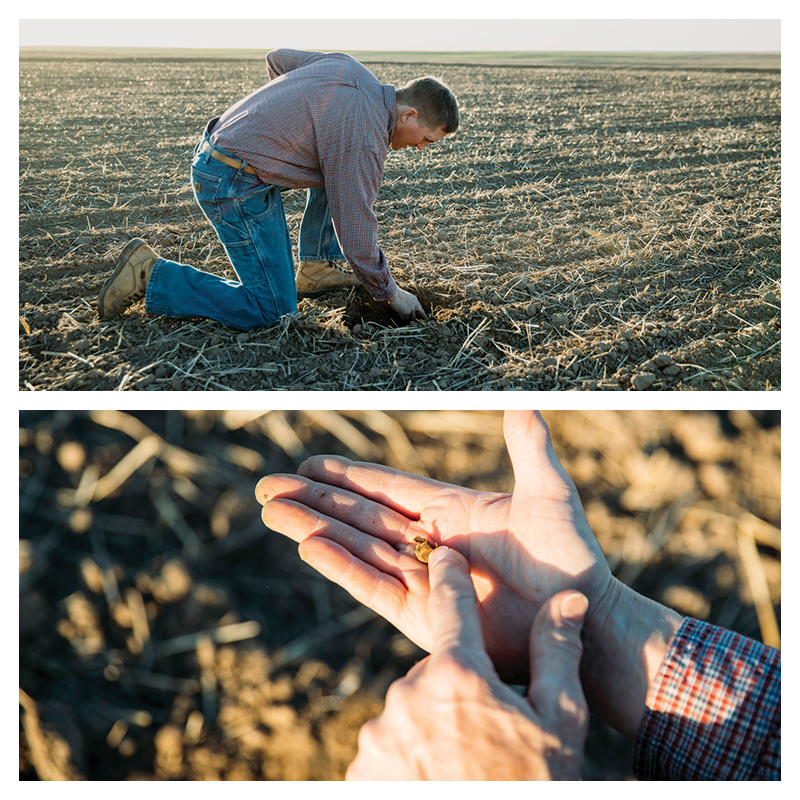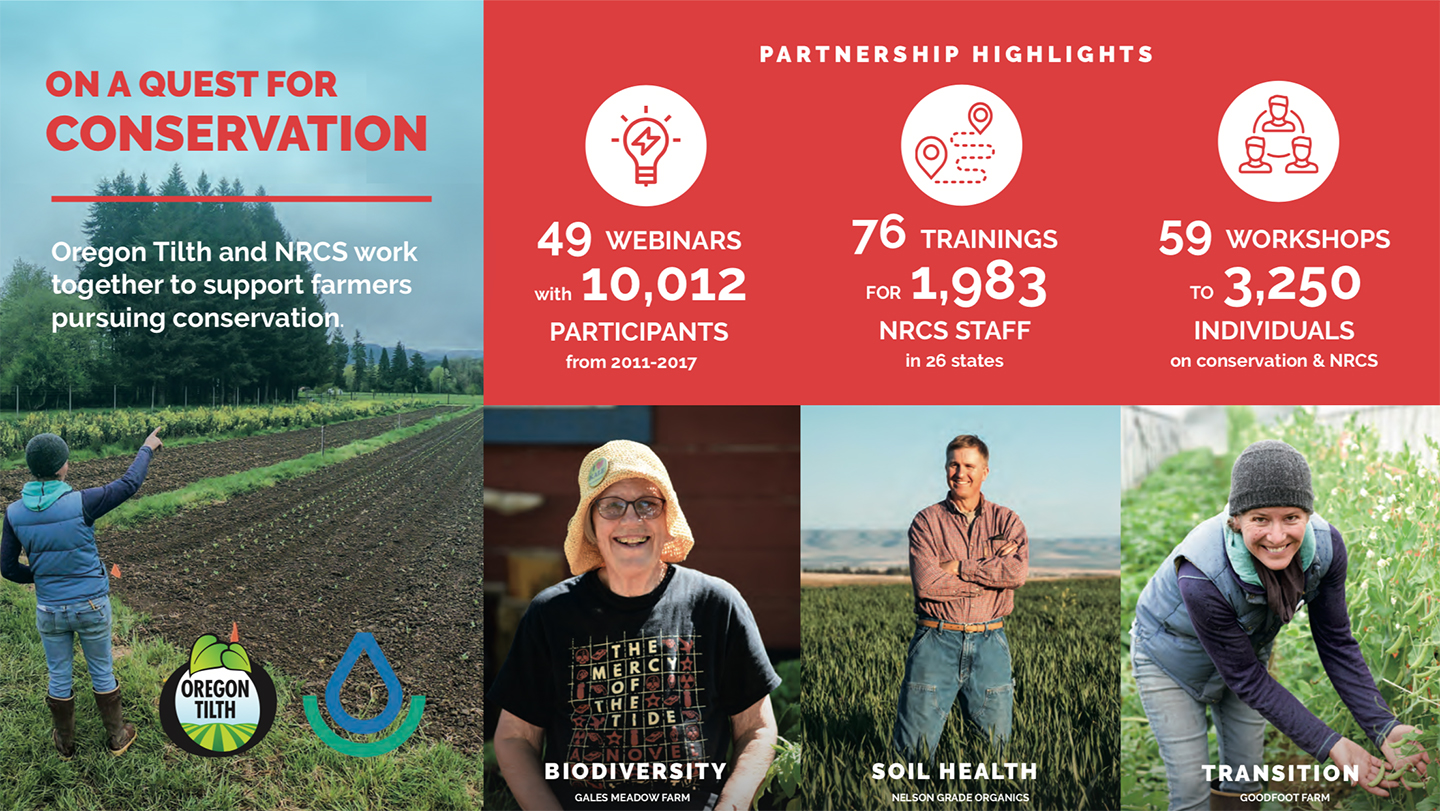Nelson Grade Organics: Soil Steward

Working with nature to grow crops on a farm takes patience, know-how, and the right resources.
And a ton of grit.
Eric Nelson has them all. In 2006, he took on the challenge of farming 900 acres organically outside of Pendleton, Oregon. In a typical year, the area gets 12 inches of rain annually. Nelson turned to the USDA Natural Resources Conservation Service (NRCS) for funding and technical assistance in making the transition to organic while preserving soil health in the face of low precipitation. “The soil is the most valuable asset,” he said. “You don’t want to lose it and want to keep as much around as possible, as long as possible. The soil is what we have, and the quality of the food depends on it.”

With NRCS assistance, and participation in the Environmental Quality Incentives Program (EQIP), Nelson implemented crop rotation strategies to improve soil health and preserve moisture retention. NRCS staff Terry Johnson and Nick Sirovtka advised Nelson on which cover crops to incorporate into his rotation for the dry silt-loam soil. “I picked the brains of the NRCS staff on what they thought would work and would not work,” he said. “I’ve narrowed it down to certain practices that work well for this environment.” With NRCS guidance, Nelson has settled on large seed cover crop varieties — 75 percent legume and 25 percent grass — when planting in the spring.
Wheat farming without irrigation in semiarid areas requires creativity and planning. Nelson uses an 11-year crop rotation strategy, cycling crops across 11 parcels, each one 80 acres in size. The extended rotation builds soil fertility and keeps the moisture in the ground. “The rotations and the cover crops [also] do a good job of mitigating some of the weed pressures,” said Nelson. “From an empirical point of view, we get more clots in the soil, with a different improved texture.”

Oregon Tilth and NRCS share knowledge and build farmer-focused educational tools to support conservation pioneers like Eric Nelson. From 2011-2017, Oregon Tilth organized 59 workshops for 3,250 individuals on topics covering several conservation practices, available NRCS programs, and NRCS-related funding.
“I love the challenge of trying to make a difference and improving on what I’m doing. We’re still making mistakes, so there are always areas for making improvements. If it doesn’t work, you adjust it to make it work for you. I’m happy with what we’ve done and the direction we’re going.”

Conservation matters.
Each farm is different, and conservation goals of a farm often reflect the place and people. A farm in a low precipitation zone may be more focused on preserving soil moisture, while a farm with fruit trees may want to attract native pollinators. For organic farmers, conservation is an integral part of their practice. Between organic’s focus on soil stewardship and biodiversity and the USDA Natural Resource Conservation Services’ (NRCS) mission to “help people help the land” a partnership between Oregon Tilth and NRCS is only natural.
NRCS and Oregon Tilth partner to offer conservation know-how to a wider range of farmers, as well as boosting professional development on organic practices for conservation specialists. Together we assist more farmers in becoming better land stewards for future farmers and generations.
Want more conservation content? We’re sharing it this story and more on our Instagram.
